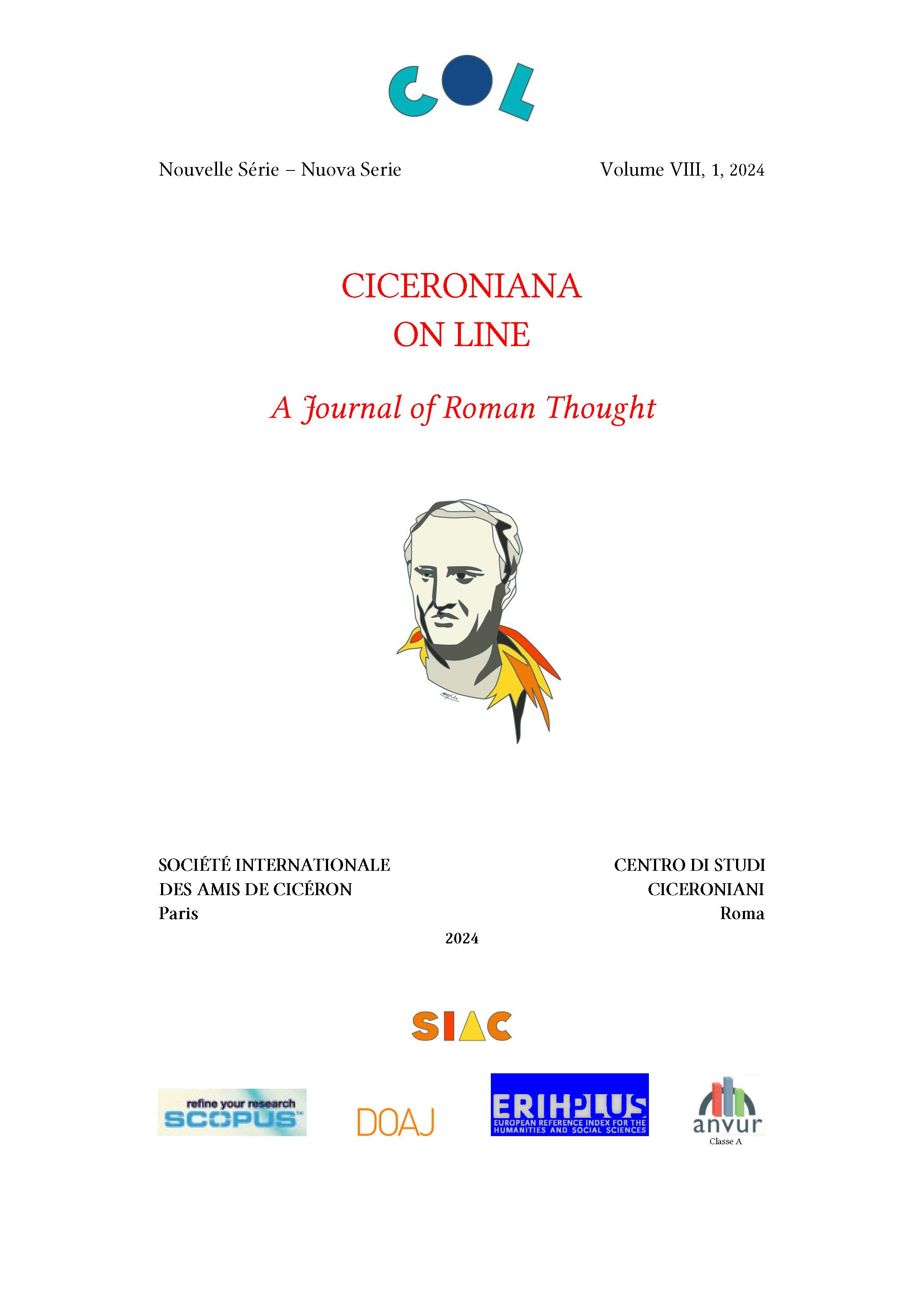Observations on the rhetorical device of feminisation in Ciceronian invective
DOI:
https://doi.org/10.13135/2532-5353/10904Abstract
In Cicero’s invective speeches, his adversaries are usually represented as “non-Romans” — that is, as individuals not belonging to the community—through the deployment of different rhetorical devices that isolate them and exclude them from the res publica. One such device is feminization. The attribution of traits, behaviours, and ways of dressing and speaking identified as typical of women contribute to the negative characterization of Verres, Catiline, Clodius, Mark Antony and Gabinius, and to their exclusion from the Roman prototype postulated by Cicero, i.e., that of the civis, a male citizen, competent, and of legal age who participates in public life.
Downloads
Downloads
Published
How to Cite
Issue
Section
License
Authors who publish with this journal agree to the following terms:
- Authors retain copyright and grant the journal right of first publication with the work simultaneously licensed under a Creative Commons Attribution License that allows others to share the work with an acknowledgement of the work's authorship and initial publication in this journal.
- Authors are able to enter into separate, additional contractual arrangements for the non-exclusive distribution of the journal's published version of the work (e.g., post it to an institutional repository or publish it in a book), with an acknowledgement of its initial publication in this journal.


 Ciceroniana On Line is recognised by ANVUR (the National Agency for the Evaluation of the University System and Research) as a CLASS A journal for the Sciences of Antiquity, Philology, Literature and History of Art (
Ciceroniana On Line is recognised by ANVUR (the National Agency for the Evaluation of the University System and Research) as a CLASS A journal for the Sciences of Antiquity, Philology, Literature and History of Art ( The journal is included in DOAJ. The DOAJ listing of the journals is available at
The journal is included in DOAJ. The DOAJ listing of the journals is available at  The journal is indexed in
The journal is indexed in  The journal has been included in ERIH PLUS. The ERIH PLUS listing of the journals is available at
The journal has been included in ERIH PLUS. The ERIH PLUS listing of the journals is available at 

